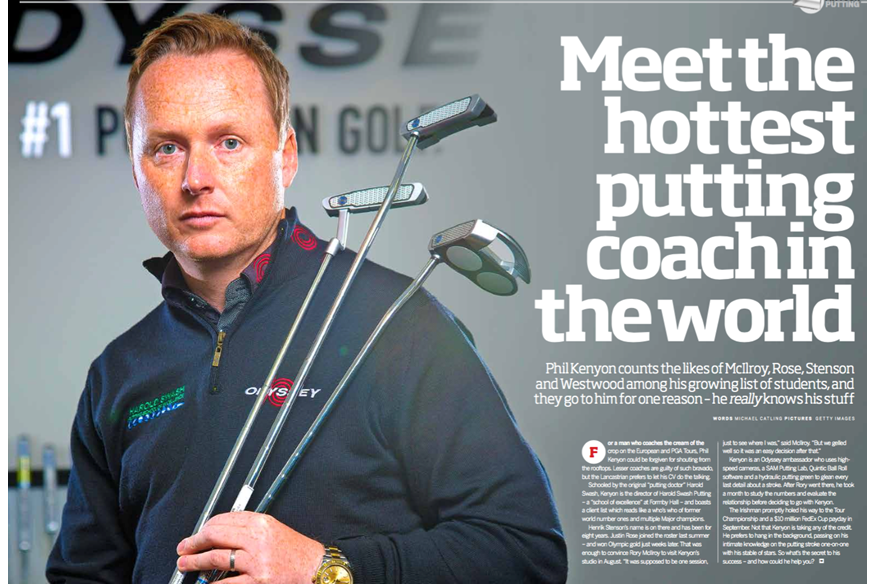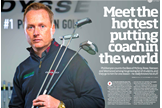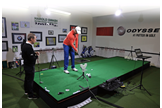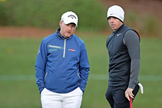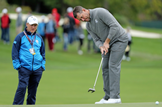Phil Kenyon: Meet the World’s hottest putting coach
Last updated:
Phil Kenyon counts the likes of McIlroy, Rose, Stenson and Westwood among his growing list of students, and they go to him for one reason – he really knows his stuff.
For a man who coaches the cream of the crop on the European and PGA Tours, Kenyon could be forgiven for shouting from the rooftops. Lesser coaches are guilty of such bravado, but the Lancastrian prefers to let his CV do the talking.
Schooled by the original “putting doctor” Harold Swash, Kenyon is the director of Harold Swash Putting – a “school of excellence” at Formby Hall – and boasts a client list which reads like a who’s who of former world number ones and multiple Major champions.
Henrik Stenson’s name is on there and has been for eight years. Justin Rose joined the roster last summer – and won Olympic gold just weeks later. That was enough to convince Rory McIlroy to visit Kenyon’s studio in August. “It was supposed to be one session, just to see where I was,” said McIlroy. “But we gelled well so it was an easy decision after that.”
Kenyon is an Odyssey ambassador who uses high-speed cameras, a SAM Putting Lab, Quintic Ball Roll software and a hydraulic putting green to glean every last detail about a stroke. After Rory went there, he took a month to study the numbers and evaluate the relationship before deciding to go with Kenyon.
The Irishman promptly holed his way to the Tour Championship and a $10 million FedEx Cup payday in September. Not that Kenyon is taking any of the credit. He prefers to hang in the background, passing on his intimate knowledge on the putting stroke one-on-one with his stable of stars. So what’s the secret to his success and how can he help you? We booked a lesson with the man himself to find out…
I was exposed to coaching at an early age and I learned a massive amount from Harold Swash [who coached many of Europe’s great players including Nick Faldo, Padraig Harrington, Darren Clarke and Lee Westwood, and invented the famous Yes! C-Groove putter]. I got to know him as a young boy because he was a good friend of my dad’s. He helped me a lot before and after I turned professional, and I then started teaching on the side to help him out and earn some extra money. When I stopped playing, I was fortunate that he offered me a position to work alongside him. He was at an age when he was slowing down and he was like a mentor to me. If it wasn’t for him, I wouldn’t be doing what I was doing.
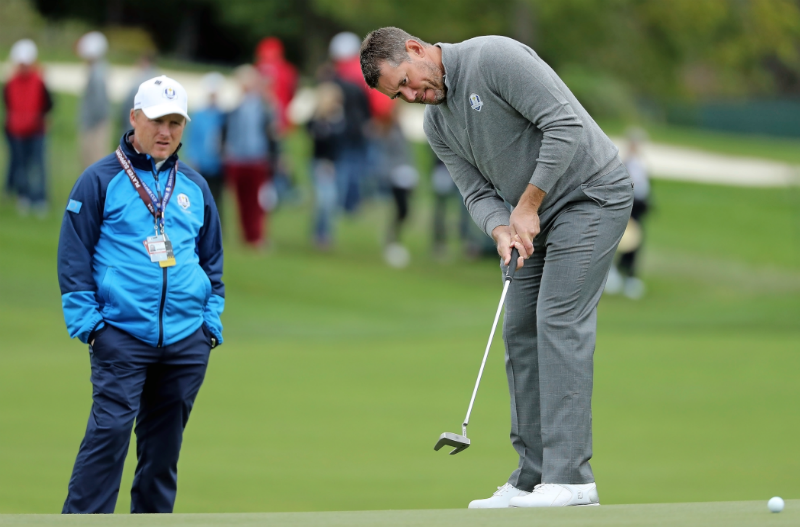
I always argued that if I didn’t make it as a playing professional, I would get involved in coaching. I graduated with a Masters degree in sports science before I turned pro, and I always enjoyed the teaching side of things. But as a golf fan, sometimes I have to pinch myself that I’m working with players who have won Majors and Olympic medals. It’s very rewarding to see close-hand their marvellous feats and often it doesn’t feel like a job; it’s more like a pastime.
The Ryder Cup last year was particularly special, regardless of the result. I had eight players who I work with who made the team. I’ve also been lucky enough to be involved with Henrik [Stenson] and Darren Clarke when they won The Open. As a boy, the Open Championship was always the event you had a putt to win on the practice green. To be fortunate enough to work with two players who’ve won it – and to have been with them during the week – was pretty incredible.
I got my PGA status downgraded last year because I didn’t earn enough points. You’ve got to attend a certain amount of seminars and courses to earn points, but my workload was so hectic that I didn’t meet the requirements. Unfortunately, it’s the way the system works, but it hasn’t affected my job professionally. I’ve barely managed to find any time to play this year because I’ve been so busy travelling to tournaments and teaching from my studio at Formby.
If a pro hits what he considers to be a good drive then 99 times out of a 100 he will be on the fairway. But he can hit what he thinks is a good putt and the ball will regularly not go in. At times it’s quite difficult for the player to really assess why that is happening. My job is to help them evaluate that and put a perspective on it. If it’s not a technical issue, make sure that they do not tinker. It’s not always about giving them lessons, changing the technique, every week on tour.
Integrating science and technology into every lesson is a big part of what we do at Formby. Generally, we try to measure every single aspect of the ball, putter and body. We use SAM PuttLab to measure the kinematics of the putter; a 3D system to measure the movement of the body; Quintic Ball Roll to measure the launch and spin of the ball; and a lot of high-speed videos to create a qualitative measurement of everything. When someone comes here for a lesson, we normally allocate two hours so we can educate them on the best ways to practice.
You might assume that an elite player has all the basics nailed, but that’s not always the case. Sometimes it’s very simple things which tour players get wrong. On the whole, though, you are dealing with more minutia and focusing on developing skill sets with elite players, as opposed to gross techniques with amateurs.
Teaching a high handicapper is a completely different kind of challenge, but the fundamentals are very much the same. And at the end of the day, it’s still a golf lesson. I’m still trying to get someone to understand the right concepts and coordinate themselves better. The analysis procedure doesn’t change; the only difference is that elite players have a greater adaptability and hand-eye coordination to do what is asked of them quickly and effectively.
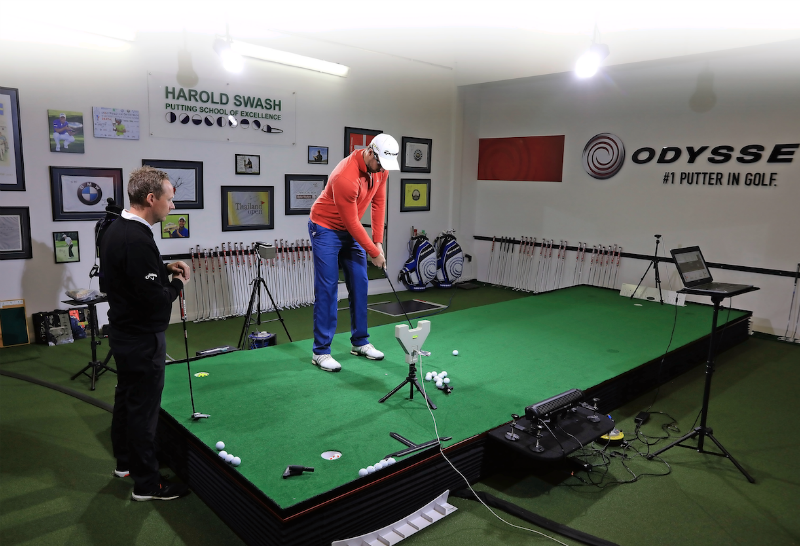
I have been lucky that I’ve worked with a lot of fantastic putters. But if I had to pick one, David Horsey would probably be up there. I started working with him when he was 18 and his putting wasn’t a particular strength. We’ve now been together for 12 years and it’s been a really nice journey to watch his development. He’s gone on to play in the Walker Cup; won multiple times on the Challenge Tour and the European Tour; and established himself as a really good putter. Matt Fitzpatrick is another one who came to see me as a teenager. We started working together when he was 15 and I think he’s as good as anyone on the green.
A large part of putting is mental, but unless you’ve got some decent technique, it doesn’t matter how positive you are. If your club face is open, the ball isn’t starting online. You’ve got to have some resemblance of technical ability before you can start layering in the mental stuff. A golf coach has to do their job first before a psychologist can help to fine-tune things.
A lot of tour players tend to use drills which help to calibrate their set-up and the mechanics. Some of the most common are things like mirrors, alignment sticks and elevated string lines. One of my favourite drills I get players to use is a putting gate. It works by placing two tees on your intended start line (just wider than a ball’s width apart) which you have to putt through. Irrespective of your technique, it bridges together the ability to start the ball online, make a good read and control the speed.
Putting doesn’t get nowhere the amount of attention it should get. It amazes me how many club golfers don’t have enough lessons – and have never been custom fit. The two go hand in hand. There’s a lot of myths about putter fittings and how certain head shapes suit certain strokes, which is largely not true. But length and lie of the putter can affect certain aspects of set-up and technique. Alignment configuration and head shapes can also influence aim, so there’s a lot of aspects to a fitting which play an integral part in any lesson. Sadly, the average golfer doesn’t pay for instruction and ends up buying a putter off the shelf which, in most cases, is ill-fitting.
I get asked a lot about what my best tips are, but putting is a very individual part of the game. There’s no one-size fits all approach. I’ve worked with tour players who use alignment lines on balls and others who totally ignore them. It all comes down to personal preference. If you struggle to aim the putter but you class yourself as a pretty good green reader, using an alignment line can be a very useful tool. But if you’re not very good at green reading by sight and rely a lot on feel,
I think a line can be very constraining. The key is to find out what works for you. To improve your putting, you need to understand what you are doing wrong. Then you can get the appropriate fix for it. And the only way you can do that is by going for a lesson. The biggest fault I see is too much body movement and too much hand and arm movement, but then every player is different. Ultimately, you’ve got to get help which is relevant to you. Once you’ve done that, it all comes down to the quality of practice.
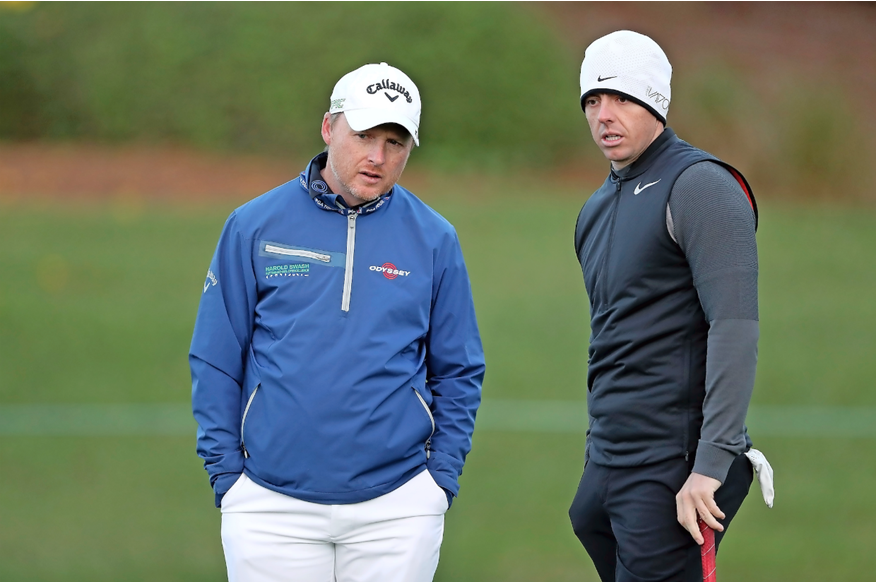
Phil Kenyon’s Success Stories
RORY MCILROY: After missing the cut at the US PGA, McIlroy enlisted the help of Kenyon. Two tournaments later and he enjoyed his best putting performance in 16 months, holing six putts between 10 and 20 feet in the third round at the Deutsche Bank Championship. He went on to win the Tour Championship and has finished inside the top 10 in seven consecutive stroke-play events since.
HENRIK STENSON: The Swede made 25 birdies en route to setting a new Open record for the lowest winning score of 20 under par. He needed just 24 putts during the third round, and finished the week ranked fourth in putting overall. He ended the year ranked 18th in putts per GIR on the European Tour
JUSTIN ROSE: Since joining forces with Kenyon, the Englishman has won gold at the Rio Olympics and finished runner-up at The Masters. He currently ranks inside the top 75 for strokes gained in putting on the PGA Tour – up more than 60 places versus last year.
MATTHEW FITZPATRICK: Labelled a “fantastic putter” by Lee Westwood, the 22-year-old won the DP World Tour Championship in November averaging just 28 putts per round. He currently sits sixth in strokes gained/putting for the 2016/17 PGA Tour season.
MARTIN KAYMER: The two-time Major winner averaged 1.54 putts over all four days at Augusta last month. Only two players had a better record.
CHRIS WOOD: The defending BMW PGA champion finished inside the top 20 for putts in GIR on the European Tour in 2015 and 2016.
